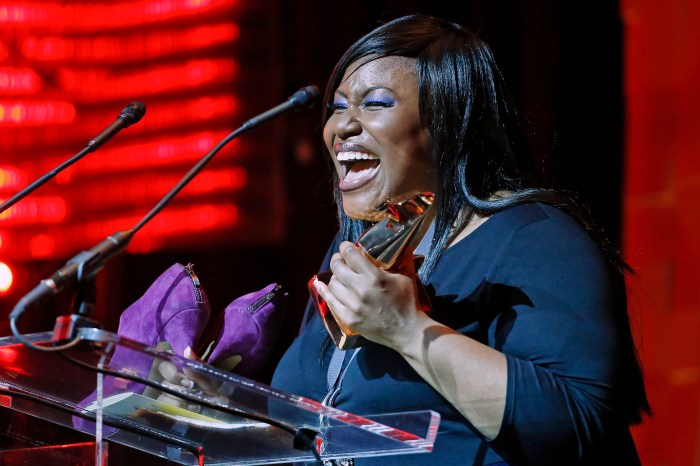 You don’t need lots of equipment to get a great workout — you just need to do it.
You don’t need lots of equipment to get a great workout — you just need to do it.
Credit: Wikimedia Commons
It’s happened over and over: I join a gym, go for two weeks, and then start making excuses and never go back. It seems like I’m really good at starting a fitness program, but lousy at sticking with it.
The fact that I’ve gone to New York Health and Racquet Club about three times a week for two months is probably a personal record. There are days when it’s really hard to get there, either because I don;t have the time or I lack motivation (or both), but I’ve reached the point where I feel better when I work out than when I skip it.
One of the NYHRC instructors, Celine Desgranges,said two things that stuck with me during her boot camp class recently. One was something a personal training client told her: “Every breath is a new opportunity.” That resonated with me; as overwhelming as life can be, there are countless chances to change things for the better. Sometimes all it takes is to release a breath and start over.
The other concept sounds simple but it’s something I need to keep reminding myself: “No challenge, no change.” Getting in shape is hard work — it’s not going to happen automatically or quickly. But it’s all the more valuable because it’s hard.
The motivation and support I’m getting from NYHRC is fantastic — I credit them with a lot of my success — but not everyone has access to the same resources. But not having a gym membership (or having to skip a day) shouldn’t keep you from getting a great workout.
I asked trainer Matt Sauerhoff to put together an at-home exercise plan that you can do with little or no equipment — Here’s his “No Place Like Home” workout.
Get moving: “Warm up with an invisible jump rope — Imagine you are jumping rope with out the actual rope,” Matt said. “Do that until you break a slight sweat (3-5 minutes).”
Stretch it out: “If you work in an office and sit in front of a computer all day, you’re going to want to focus on those tight or overactive muscles: hip flexors, quads, chest, lats, shoulders and hamstrings,” Matt said. “If you wear high heels, make sure to stretch your calves as well.”
Work your core (midsection):
Planks: Similar to a push up — Start on your stomach with your legs straight behind you. Place your forearms flat on the floor, with your elbows under your shoulders. Raise your body up, supporting yourself with your forearms/elbows in front and feet (pointed toward the floor) in back. Keep your back flat, and look down — trying to look forward will place too much stress on your neck. Hold for 30 seconds.
Superman: Staying on your stomach, reach your hands straight in front of you with your chest on the ground. Then, pull your arms behind you so they’re at your sides, raising your head and chest up and squeezing your shoulder blades together. (It’s a bit like swimming the breaststroke.) Repeat 12-15 times.
Hip Bridges: Flip over onto your back and place your feet and forearms flat on the floor. Raise your pelvis up without arching your back. Don’t tuck your chin to your chest to avoid neck strain. Hold for 30 seconds.
Circuits for strength training: “We New Yorkers have very little time, so we want to make every second count,” Matt said. “Focus your energy and time into building the ‘Big Three’: back, chest and legs. All the other little guys are working too don’t worry! Do these exercises in a circuit, 12-15 reps with no break, then rest for 45 seconds. Repeat three times then move on to the next circuit.”
Circuit 1:
Squats: With feet apart, sit back and down as far as you can. Your feet should be flat on the floor — the movement should mostly be in your hips. As in almost all of these exercises, keep your back flat and chest tall. Using a chair to sit on to might help if you need help balancing.
Reverse Lunges: Standing up straight with feet slightly apart, take a large step back with one foot. Your weight should be on your front leg, with your foot flat on the floor. Your front leg should form a 90-degree angle — don’t let your front knee go further forward that the laces of your shoe. Repeat 12-15 times, then switch legs.
Good Mornings: Stand with feet shoulder width apart and knees slightly bent. Bend over at the waist, pushing your hips and rear back while keeping your chest parallel to the floor. Stand back up, pushing your hips forward.
Circuit 2:
Bent-Over Rows: If you don’t have hand weights, improvise with a one-liter bottles of water, gallon of milk, or bag of flour. Stand next to a chair and put your knee and lower leg up on the seat. Grasp you weight in one hand with your arm straight. Raise your hand toward your armpit, keeping your arm and elbow tight against your body. Control the downward motion — don’t just let the weight drop, or your missing half the exercise.
Reverse Flies: Stand in the same position as the middle of “Good Mornings” (feet apart, knees bent, chest bent over with back flat) with hands together in front of you, weights in each hand. Lift your arms to the sides to shoulder height, making a T shape with your upper body. Reverse the motion and repeat.
Prone Cobra: Very similar to Superman — Start lying on your stomach with your arms against your sides and palms facing down. Raise your legs, arms, chest and head off the ground with your arms pointed backward and your shoulder blades squeezed together. Rotate your wrists so your thumbs stick upward. Hold 30-60 seconds.
Circuit 3:
Push-Ups: Everyone’s favorite, right? Hands should be shoulder-width apart, and if you need the extra support keep your knees on the floor but legs together and as straight as possible. Don’t arch your back!
Dips: Sit on the edge of a chair or sofa with your legs together and feet flat on the floor. Grasp the edge and lower yourself to the floor so that your knees form a 90-degree angle. Straighten your arms and lift yourself back up.
Chest Flies: Similar to reverse flies, except lying on your back. Start with arms out to the side, a weight in each hand. With straight arms, bring your hands together until the weights meet above you. Control the movement as your arms move back to the floor.
“There are many things around the home that you can improvise to use for resistance,” Matt said. “Be creative and consistent with weight selection. Of course you can always invest in a few dumbbells or a set of resistance bands. Always practice — safety first!”
Progress Report
With 12 pounds to go, time is running out. Can I do it?
Starting Stats (as of Jan. 29)
Weight: 209.5 pounds
Body Mass Index (BMI): 36
Chest: 48 inches
Waist: 41 inches
Hips: 48.5 inches
Current Stats (as of March 25)
Weight: 191 pounds (18.5 lost)
BMI: 32.8 (3.2 points)
Chest: 42.5 inches (5.5 inches)
Waist: 39.13 inches (nearly two inches)
Hips: 43 inches (5.5 inches)
Amanda Art is Metro’s social media manager. Over the next few months, track her weight loss progress as she readies for her May 3 wedding. Follow Amanda on Twitter at @NYNewsgirl.


















